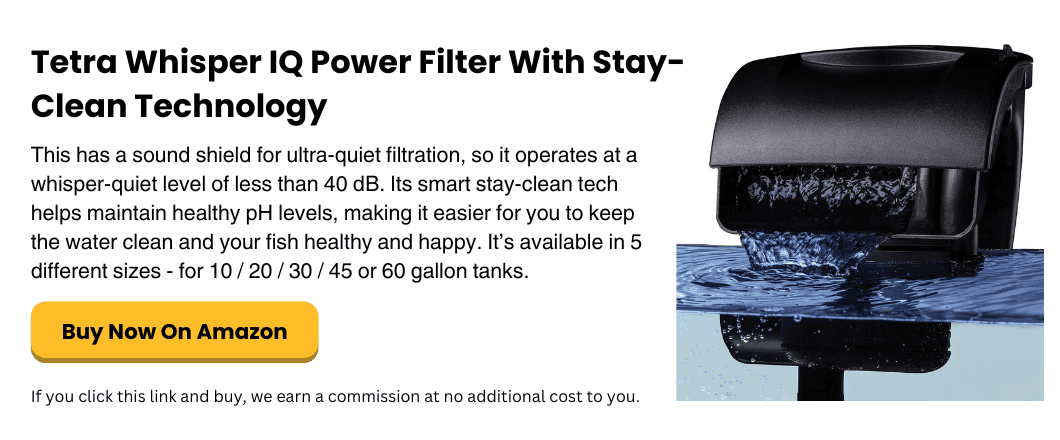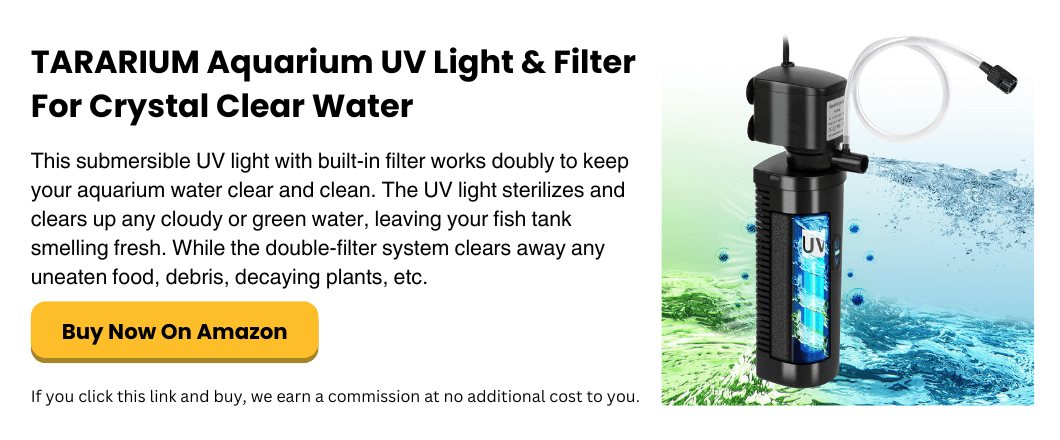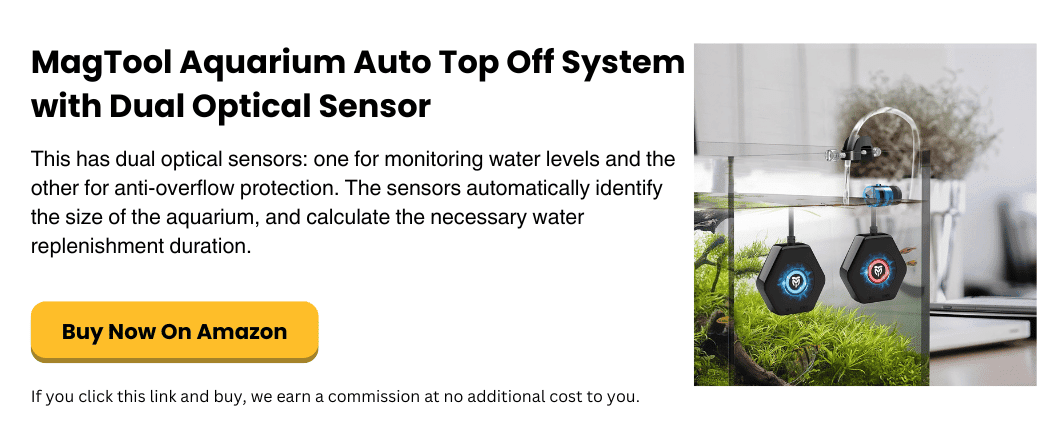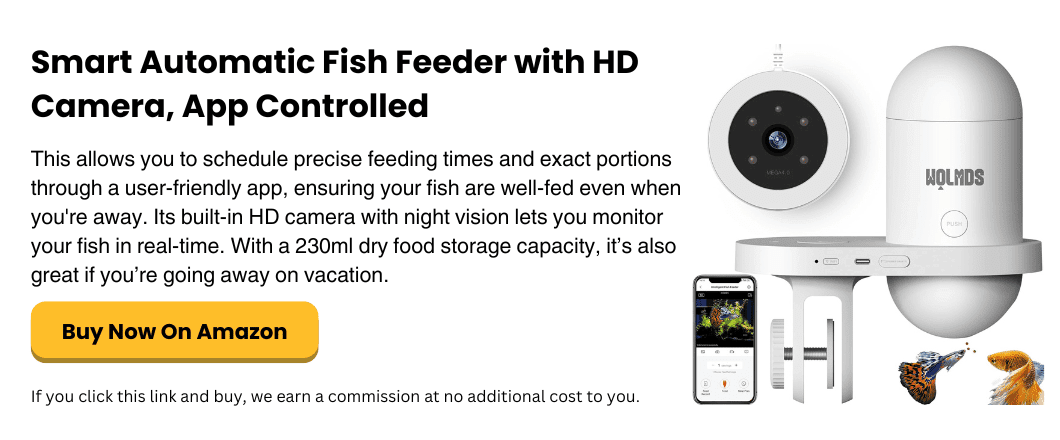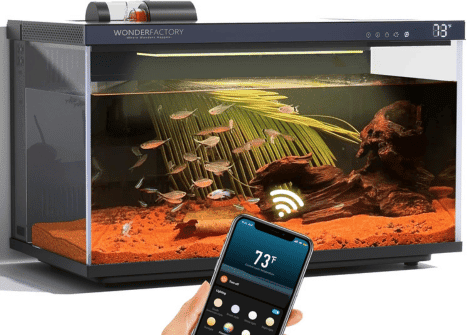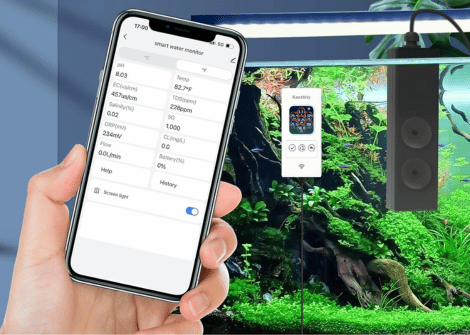Why Is My Fish Tank Cloudy? Top Causes and How to Fix It
Cloudy aquarium water is a common concern among fish owners, both new and experienced. It can obscure the beauty of your aquatic setup and may indicate underlying issues that need attention.
Understanding the causes and solutions can help restore clarity and ensure a healthy environment for your fish.
This guide will help you determine what is causing the cloudy water in your aquarium, how to clear it, and how to prevent it from happening again.

Table Of Contents
Understanding The Causes Of Cloudy Aquarium Water
Effective Solutions To Clear Cloudy Water
Long-Term Solutions to Stop Cloudy Water Before It Starts
How to Use Smart Tech for Cleaner, Clearer Aquarium Water
Smart Heaters
Smart Filters
Smart Lighting
Smart Top Up Systems
Smart Dosing Systems
Smart Fish Feeders
Smart Aquarium Sets
Frequently Asked Questions
Understanding the Causes of Cloudy Aquarium Water
Cloudy water in your aquarium can be frustrating and confusing, especially when everything else seems fine. Whether you’re new to fishkeeping or have years of experience, murky water can show up without warning.
Understanding what causes it is the first step to fixing it and preventing it from happening again. In this section, we’ll break down the most common reasons your tank might look foggy—like bacterial bloom, algae bloom, or overfeeding—so you can get your water clear and your fish happy again.
1. Bacterial Bloom
A bacterial bloom is one of the most common reasons for cloudy aquarium water, especially in new tanks. It happens when beneficial bacteria multiply quickly—usually due to excess waste, uneaten food, or a sudden spike in nutrients. The water turns milky or hazy as the bacteria float freely before settling.
While it might look alarming, it’s often a sign that your tank is still balancing itself. The best approach is patience: avoid overfeeding, keep up with water changes, and let the filter do its job.
2. Unwashed Substrate
Introducing new gravel or sand without thorough rinsing can release fine particles into the water, causing immediate cloudiness. Gravel, sand, or other materials often come coated in dust and fine particles from packaging and transport. These particles can remain suspended, making the water appear murky until they settle or are filtered out.
Always rinse your substrate thoroughly in clean water before adding it to your aquarium. It might take a few rounds, but it’s definitely worth it.
3. Overfeeding
Overfeeding is one of the most common reasons why aquarium water turns cloudy. It’s easy to give your fish a little extra, but uneaten food quickly sinks, breaks down, and creates waste that clouds the water.
As the food decays, it increases nutrient levels, promoting bacterial growth, which can cause a milky haze and spike ammonia levels—bad news for your fish. To avoid this, feed small amounts your fish can eat in a couple of minutes and remove any leftovers. A little restraint goes a long way in keeping water clean.
4. Overstocking
When you have too many fish in one tank, waste builds up faster than your filter can handle. More fish means more uneaten food, more ammonia, and more poop! – all of which cloud the water and stress your fish.
Even if the tank looks big enough, the biological load can overwhelm your setup. A good rule of thumb is to stock slowly and make sure your filtration system is sized for the number and type of fish you keep.
5. Algae Bloom
An algae bloom can quickly turn your clear tank water into a green, cloudy mess. It usually happens when there’s too much light and excess nutrients like nitrates or phosphates in the water. This is often due to overfeeding or infrequent water changes. Algae thrive under these conditions and multiply fast, making the water look murky.
While a little algae is normal, a bloom is a sign something’s off in your tank’s balance. Cutting back on light and improving water quality usually helps clear things up.
Effective Solutions to Clear Cloudy Water
Clearing up cloudy aquarium water doesn’t have to be a guessing game. Once you know what’s causing the problem, you can take the right steps to fix it. In this section, we’ll cover simple, effective solutions that actually work, because clear water means healthier fish, and a cleaner tank is so much easier for you to enjoy.
1. Patience with New Tanks
In cases of bacterial bloom in new tanks, the best approach is often to wait. Avoid adding more fish or changing the water excessively. Allow the beneficial bacteria to establish themselves, which will naturally clear the water over time.
2. Proper Substrate Preparation
Before adding new substrate, rinse it thoroughly until the water runs clear. This step removes dust and fine particles that can cloud the water.
3. Controlled Feeding
Feed your fish only what they can consume in a few minutes. Remove any uneaten food promptly to prevent decomposition and nutrient buildup.
4. Appropriate Stocking
Ensure your tank isn’t overcrowded. Research the space requirements for each species and maintain a balance to prevent excessive waste production. Also, make sure your filter system is right for the size of your fish tank and for the number of fish you have in the tank.
5. Light Management
Limit the duration of light exposure to prevent algae overgrowth. Avoid placing the tank in direct sunlight and consider using a timer to regulate artificial lighting.
6. Regular Maintenance
Perform routine water changes, typically 10-15% of the water should be changed weekly, to maintain water quality. Also clean the substrate and decorations to remove debris and prevent nutrient accumulation.
7. Use Water Clarifiers
In some cases, water clarifiers can help by binding small particles together, making it easier for the filter to remove them. Use these products as directed and ensure they are safe for your fish species.
Long-Term Solutions to Stop Cloudy Water Before It Starts
Keeping your aquarium water clear over time is all about building good habits. A little regular care goes a long way toward preventing cloudiness before it starts. In this section, you’ll find easy, long-term tips to help you stay ahead of the problem—like routine maintenance, smart feeding, and proper lighting. These simple practices will keep your tank looking great and your fish feeling their best.
1. Establish a Maintenance Routine
Establishing a consistent maintenance routine is one of the best long-term solutions to prevent cloudy water in your fish tank. Regular upkeep helps create a stable, healthy environment where your fish can thrive and water clarity stays on point.
When you stay on schedule, it’s easier to catch small issues before they turn into big problems. A routine also makes aquarium care feel more manageable and less like a chore. With a little planning, keeping your tank clear becomes second nature.
2. Invest in Quality Filtration
Investing in quality filtration is a smart move for keeping your aquarium water clear and your fish healthy.
A reliable filter does more than just clean—it helps maintain the balance of your tank by removing waste, excess food, and harmful substances before they cloud the water. Think of it as the heart of your aquarium system, working around the clock. While a good filter may cost more upfront, it pays off in the long run with fewer issues and a cleaner, more stable tank.
3. Introduce Live Plants
Introducing live plants to your aquarium is a natural and effective way to help prevent cloudy water. Plants act as natural filters by absorbing excess nutrients and providing oxygen, which keeps water conditions in check. They also help stabilize your tank’s ecosystem, reduce algae growth, and give your fish a more natural environment. Plus, they add beauty and vibrancy to your setup. With the right plants, you’ll enjoy clearer water and a healthier, more balanced aquarium.
4. Quarantine New Additions
Quarantining all new additions to your aquarium is a smart way to prevent cloudy water and protect your tank’s balance. When you add new fish, plants, or decorations without quarantining them, you risk introducing harmful bacteria, parasites, or excess nutrients that can disrupt water quality. By setting up a separate quarantine tank, you give new arrivals time to acclimate and ensure they’re free from contaminants before introducing them to your main tank. It’s a simple step that can save you a lot of headaches in the long run.
How to Use Smart Tech for Cleaner, Clearer Aquarium Water
Using smart tech to maintain clean and clear aquarium water is a good investment for any fish tank owner. Devices like advanced filtration systems, UV sterilizers, and automated water testers work together to monitor and improve water quality. These tools can detect imbalances in real time, adjust conditions automatically, and help prevent common issues that make your aquarium water look cloudy.
There are six different types of smart aquarium products we think you might want to consider:
Smart Heaters
A smart tech aquarium heater is a fantastic way to help maintain stable water conditions and prevent cloudy water in your tank.
These heaters automatically regulate the temperature, ensuring it stays within the ideal range for your fish and plants. Keeping the water at a consistent temperature reduces stress on aquatic life, which in turn helps maintain a healthy tank environment. Fluctuating temperatures, on the other hand, can lead to bacterial blooms or algae growth.
With a smart heater, you don’t have to worry about manual adjustments, as it monitors and adjusts itself to keep conditions steady. Some models even have Wi-Fi connectivity, allowing you to track and control your heater remotely through an app.
By investing in a quality smart heater, you’re not only creating a more stable environment for your fish, but you’re also preventing the common water quality issues that can lead to cloudy, murky water.
Smart Filters
Smart tech filters are a game-changer when it comes to keeping your aquarium water clear. These filters go beyond basic filtration by incorporating advanced technology to monitor water conditions and adjust their operation as needed.
Many smart filters offer multiple stages of filtration, including mechanical, biological, and chemical processes, ensuring that debris, toxins, and excess nutrients are effectively removed from your tank. Some models even have sensors that detect water temperature or filter performance, alerting you if there’s a problem or when it’s time for a filter change.
With smart tech filters, you can trust that your water quality is constantly being optimized without needing constant manual intervention. This proactive approach helps prevent cloudy water caused by poor filtration or nutrient imbalances, creating a cleaner and healthier environment for your fish. It’s a great way to make aquarium care easier while keeping your tank looking its best.
Smart Lighting
Smart aquarium LED lights are a great tool for maintaining clear, healthy water in your tank.
These lights provide full-spectrum illumination, which is essential for promoting the growth of aquatic plants that naturally filter and improve water quality. By mimicking natural light cycles with automated day-and-night transitions, they help keep your tank in balance. Consistent lighting reduces algae growth, a common cause of cloudy water, by preventing sudden light fluctuations that can trigger blooms.
Many smart LED lights come with customizable settings, allowing you to adjust brightness, color temperature, and even set timers. Some models are even equipped with Wi-Fi, so you can control the lighting remotely via an app. By investing in smart LED lights, you’re not only enhancing the aesthetic of your tank but also creating a more stable environment that supports healthier fish and clearer water.
UV Lighting
Smart Top Up Systems
Smart Dosing Systems
Smart Fish Feeders
Smart Aquariums
Frequently Asked Questions
How often should I change the water in my aquarium?
What kind of filter do I need to keep my water clean?
Can overfeeding really make my tank water dirty?
Do live plants help keep aquarium water clean?
How do I clean the gravel or substrate properly?
What role does lighting play in water cleanliness?
Should I use water conditioners or additives to keep the water clean?
More Reading
Using smart tech with your aquarium can make your life a lot easier, and makes owning fish a lot more enjoyable. Our guide shows you how it can really help.
You’re probably eager to set up your fish tank and add your favorite fish. But before you do, it is crucial you cycle your fish tank. Find out everything you need to know – and do.
Our guide gives you all you need to know about these all-in-one Smart Monitors: They measure multiple water quality parameters, such as pH, Specific Gravity, and Salinity, and send the info to your phone 24/7.


